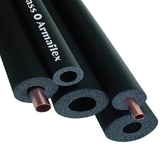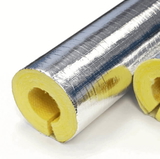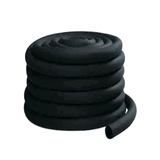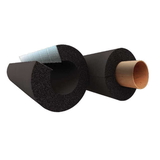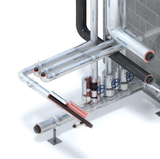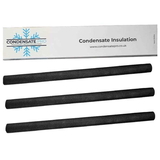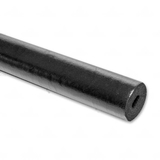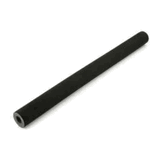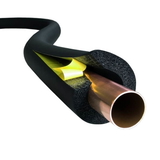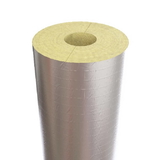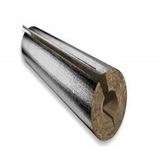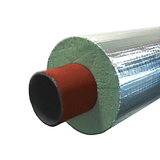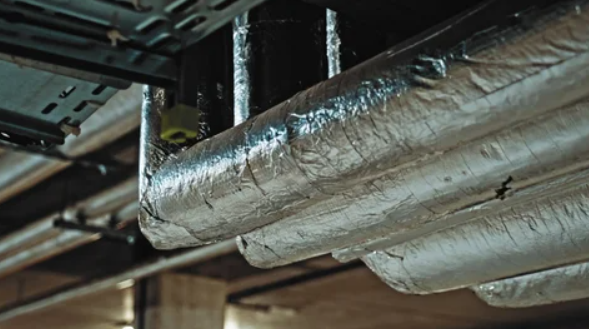- Blogs
- Tips On Preventing Condensation On Pipes
Tips On Preventing Condensation On Pipes

Condensation on pipes is a common issue experienced by homeowners and building operators alike. It is often a sign of poor pipe insulation and air-sealing in the building envelope, which can lead to a number of issues, including higher energy bills, mould and mildew growth, and structural damage.
Fortunately, with an understanding of the causes and an actionable plan, you can address this problem. In this blog post, we will explore the causes of condensation on pipes, potential solutions, and best practices to ensure that your pipes are not a source of moisture. We will also discuss the potential financial and health implications of condensation and how to properly inspect and remedy the issue.
By understanding the causes, solutions, and potential implications of condensation on pipes, you can ensure that your home or building is safe, efficient, and comfortable.
What Causes condensation on pipes?
Condensation on pipes is a common problem in many homes and businesses. It is caused by warm air coming into contact with cooler surfaces, such as pipes or air conditioning ducts. This causes the air to cool and the moisture to condense. This is especially true in humid climates, where the air is already saturated with moisture.
 Other causes of condensation on pipes include poor pipe lagging, large temperature differences between rooms and inadequate ventilation. It is important to address these issues to reduce the problem of condensation on pipes.
Other causes of condensation on pipes include poor pipe lagging, large temperature differences between rooms and inadequate ventilation. It is important to address these issues to reduce the problem of condensation on pipes.
What are the effects of Condensation on Pipes?
Condensation on pipes can have a variety of detrimental effects, such as corrosion, microbial growth, and structural damage. Corrosion of metal pipes, in particular, is caused by the presence of moisture, and this can lead to leaks and other problems.
Additionally, condensation can provide an environment conducive to microbial growth, which can further lead to health issues and contamination of the water supply. Finally, condensation can lead to structural damage to pipes and other infrastructure, as the weight of the water-soaked materials can cause them to become weakened and eventually fail.
Taking steps to prevent condensation on pipes is essential for the safety and longevity of any piping system.
How to spot condensation on pipes?
To spot condensation on pipes, you need to first check for visible signs of moisture. Look closely at the pipe and its insulation for any droplets, wet patches, or streaks. You should also inspect the surrounding area for any water damage or discolouration, which could indicate a condensation issue.
Finally, you can use a moisture meter to measure the amount of water present on the pipe. If the moisture level exceeds the recommended range for the material, then you likely have a condensation issue on your hands.
Tips for reducing condensation on pipes
Condensation on pipes can be a huge problem, especially in areas that experience high levels of humidity. Fortunately, there are some steps you can take to reduce condensation and keep your pipes from dripping.
To help you do so, here are four tips:
1. Pipe Insulation![pipe lagging]()
Insulate your pipes with some type of foam or nitrile rubber pipe lagging, as this will help keep the air surrounding them warm, preventing condensation. Foil-faced mineral wool or fibreglass pipe insulation also help reduce condensation on pipes.
2. Seal the gaps:
Make sure to seal any gaps or cracks around the pipes, as this will also help reduce air movement and condensation.
3. Keep Warm:
If possible, try to raise the temperature of the room a few degrees, as this will help keep the pipes warm.
4. Use a Dehumidifier:
Consider purchasing a dehumidifier, which will help reduce the amount of moisture in the air and thus condensation on the pipes.
In Conclusion:
Condensation on pipes is a common problem that can cause water damage and mould growth in your home. Fortunately, there are a few easy steps you can take to prevent condensation on pipes.
First, you should inspect all of the pipes in your home and make sure they are properly insulated. Pipe insulation will keep the pipes from getting too cold and potentially causing condensation. Additionally, you should ensure that your home’s humidity levels are kept at a reasonable level. The lower the humidity, the less likely condensation.

Samuel Hitch
Managing Director
Buy Insulation Online.
Leave A Reply
Your feedback is greatly appreciated, please comment on our content below. Your email address will not be published. Required fields are marked *













